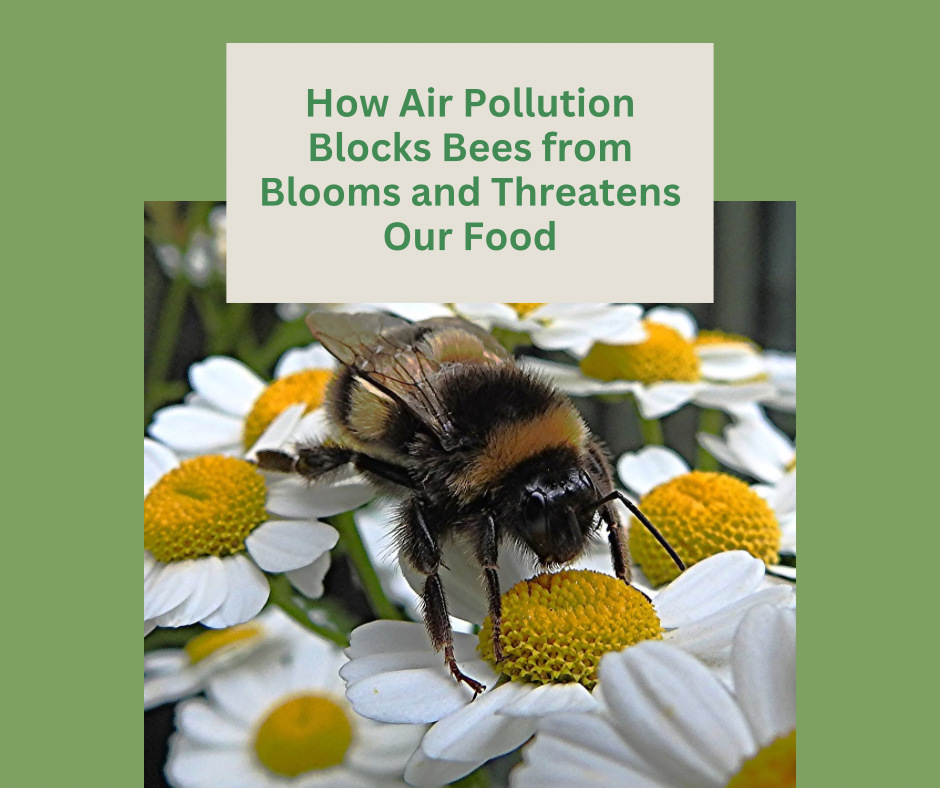In the bustling realm of environmental concerns, amidst our immediate apprehensions about climate change, melting ice caps, and rising sea levels, we’ve overlooked a silent crisis unfolding: our bees can’t find their flowers. It may sound trivial, especially juxtaposed against the grand canvas of global environmental challenges. Still, as recent research from the UK Centre for Ecology & Hydrology and partnering universities indicates, the implications are profound.
The word ‘ozone’ usually brings to mind the protective layer ensconcing our Earth, shielding us from the sun’s unforgiving ultraviolet radiation. However, there’s a lesser-known, more malevolent type of ozone, lurking close to the Earth’s surface. Spawned from the emissions of our cars and industries, this ground-level ozone is not just clouding our skies but also obscuring the scents of flowers.
In a meticulously crafted experiment at the University of Surrey, scientists used a 30-meter wind tunnel to simulate the effects of ozone on flower odors. The scent profiles flowers emit—nature’s aromatic beckoning—are being distorted and rapidly degraded by this pollution. For bees, whose entire navigation relies heavily on these scents, it’s akin to navigating a map where landmarks vanish in real-time.

A stark figure encapsulates the gravity of the problem: when faced with the interference of ozone, only about 52% of bees could discern a flower’s aroma from a mere 6 meters away, with this number plummeting further at greater distances.
Pollinators, including bees, are pivotal in the reproductive cycle of nearly 90% of wild flowering plants. These are the underpinnings of many ecosystems, and any disruptions here can spiral into larger ecological imbalances.
Additionally, an oft-forgotten reality is that a vast majority of our food crops—think fruits, vegetables, nuts, and even coffee—rely on pollinators. An environment where pollinators can’t locate flowers may very well spell impending threats to global food security.
Professor Christian Pfrang, a key contributor to this study, urges us to sit up and take notice. As the next generation of leaders, policymakers, and innovators, the responsibility to curb such threats, largely man-made, lies heavily upon our shoulders.
This is not just a bee’s plight. It’s an ecosystem’s silent cry, a warning of the fragile interdependence of our natural world. It’s a call for us to be more conscious, more proactive, and more committed to ushering in sustainable change.
Source: https://www.reading.ac.uk/news/2023/Research-News/Air-pollution-prevents-pollinators-finding-flowers?fbclid=IwAR1tAELYhLgvxn38_APBdG6-b8rycUNwLymNIt052VmcN5Gtr-9IeC_1RHY#:~:text=Air%20pollution%20dramatically%20reduces%20pollination,them%2C%20a%20study%20has%20found
https://www.earth.com/news/ozone-pollution-makes-it-difficult-for-bees-to-find-flowers/?fbclid=IwAR3ulHSWX7nWs0DJwQA9UuHPBn94yF-NxfM9aQp49dNbAAclI3nwrKPzBg0
https://www.eurekalert.org/news-releases/1000965?fbclid=IwAR3lUIMwofmEGT9Geu-KZYeoiGPXXBu5b74DtQzxHV2rzfVf_aU8P4cpupM
